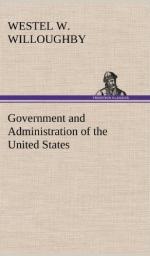Beginning with the smallest and lowest, let us show their mutual connections and workings. Starting, then, with the township convention, or convention of a city ward, we find that all the voters of the party are called together on a certain day by a committee (which was chosen at the preceding meeting) for the purpose of nominating candidates for local affairs, and naming delegates to represent them at the city or county convention. The city or county convention, composed of these men, is called together by the city or county committee. It first nominates candidates for the city or county offices, and selects delegates to the state convention, and also provides for the next meeting by the election of a new committee for the ensuing year. In similar manner, just before every state election, the state convention, composed of city and county delegates, is called together by the state central committee. Here are nominated men for state officers; a new committee is appointed to manage state elections; and also, once every four years, the important duty of selecting Presidential electors is performed. The Democrats also select, in this state convention, their delegates to the National Presidential Nominating Convention. The Republicans select but four delegates from each State in state conventions, the remainder being appointed in district conventions. Following the same method the National Central Committee calls together a National Convention of all the delegates which have been appointed by the State, for the purpose of (1) nominating candidates for their party for President and Vice President; (2) drawing up and accepting a party platform; (3) selecting a new National Central Committee for the next four years, which committee is to manage the election campaign and call the next National Convention.
CHAPTER XXII.
National Conventions and Presidential Campaigns.
_#History and Development of the National Convention.#_—In the Presidential elections of 1789 and 1792 there was no necessity for regular party nominations, as the whole people were practically unanimous in favor of Washington. Likewise in 1796 it was so well understood that Adams was the man desired by the Federalists, and Jefferson by the Democrats, that formal nominations were not required. But, commencing with 1800, political parties were more divided in their choice, and some method was demanded by which it might be decided on whom the party should unite. From 1800 to 1820 this demand was met by nominations made by Congressmen, in caucuses, or private meetings, of the members of each party. This method finally proved unsatisfactory to the country, but from 1824-1835 no new and better method was invented, and nominations were made rather irregularly, each State legislature proposing the name of its favorite. This method of nomination naturally failed to unite the voters of the party, in all the different States, on one man, and had to




